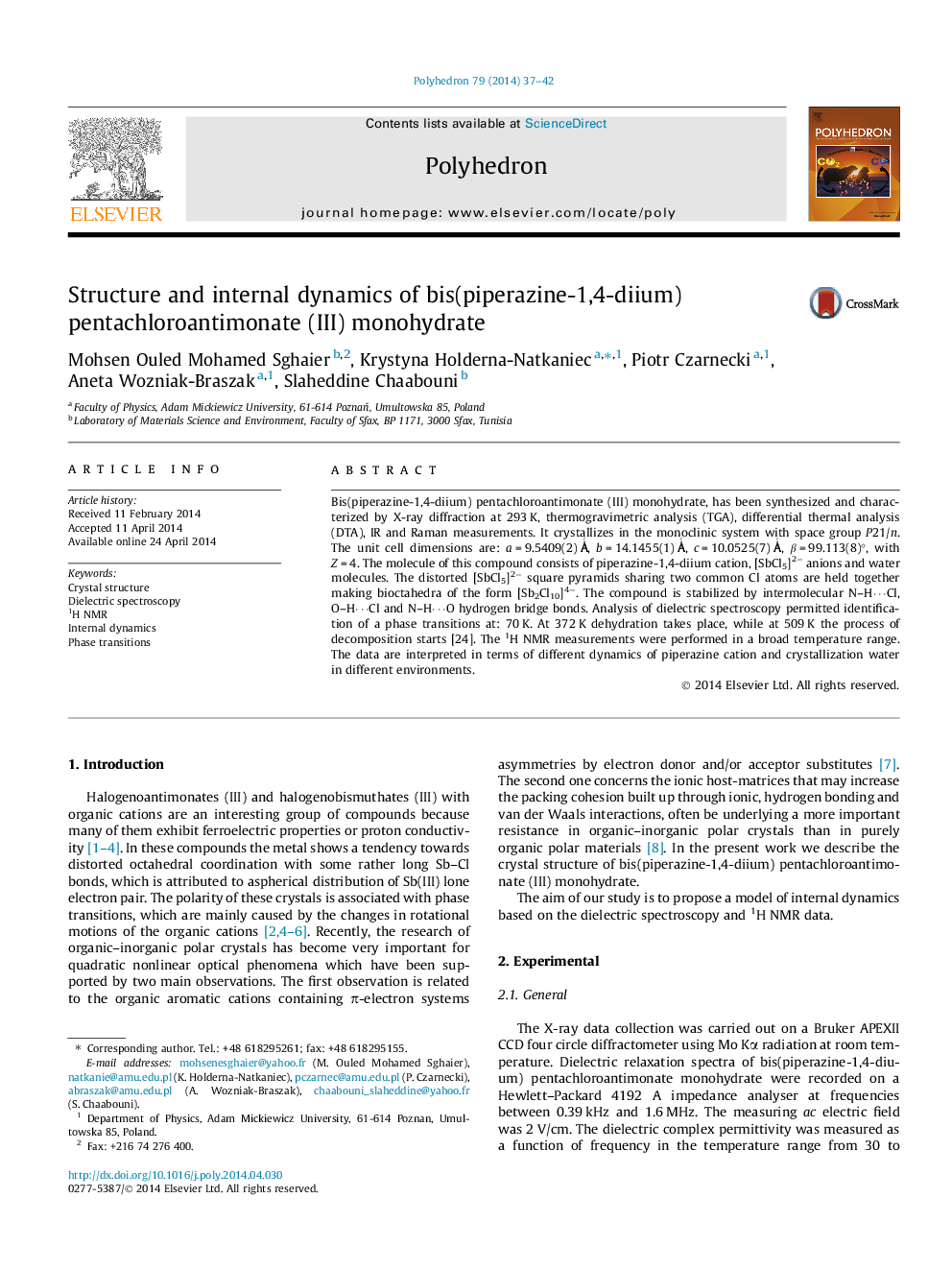| Article ID | Journal | Published Year | Pages | File Type |
|---|---|---|---|---|
| 1337697 | Polyhedron | 2014 | 6 Pages |
Bis(piperazine-1,4-diium) pentachloroantimonate (III) monohydrate, has been synthesized and characterized by X-ray diffraction at 293 K, thermogravimetric analysis (TGA), differential thermal analysis (DTA), IR and Raman measurements. It crystallizes in the monoclinic system with space group P21/n. The unit cell dimensions are: a = 9.5409(2) Ǻ, b = 14.1455(1) Ǻ, c = 10.0525(7) Ǻ, β = 99.113(8)°, with Z = 4. The molecule of this compound consists of piperazine-1,4-diium cation, [SbCl5]2− anions and water molecules. The distorted [SbCl5]2− square pyramids sharing two common Cl atoms are held together making bioctahedra of the form [Sb2Cl10]4−. The compound is stabilized by intermolecular N–H⋯Cl, O–H⋯Cl and N–H⋯O hydrogen bridge bonds. Analysis of dielectric spectroscopy permitted identification of a phase transitions at: 70 K. At 372 K dehydration takes place, while at 509 K the process of decomposition starts [24]. The 1H NMR measurements were performed in a broad temperature range. The data are interpreted in terms of different dynamics of piperazine cation and crystallization water in different environments.
Graphical abstractThe new halogenoantimonate (III) with organic cations [C4H12N2]·SbCl5·H2O was synthesized. The crystal structure was determined and model of internal dynamics of protons was proposed. The collective behavior of organic cation and inorganic anion influence on physical properties of studied sample. Especially, at lower temperature phase the H⋯N and H⋯Cl channel of relaxation dominates the H–H one.Figure optionsDownload full-size imageDownload as PowerPoint slide
